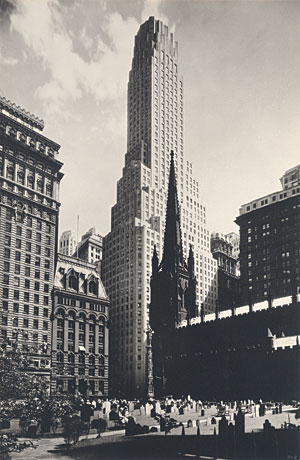
Few architecture firms live out the rigors of a century. According to DesignIntelligence’s Almanac of Architecture & Design 2010, the Lexington, Kentucky-based Mason & Hanger has been in business for 183 years, making it the oldest in the United States. A mere 58 years its junior, New York City’s HLW International is celebrating its 125th birthday this year. The firm’s progenitors designed some of Manhattan’s most iconic projects, including the Barclay-Vesey Building at 140 West Street (1926), Western Union Building at 60 Hudson Street (1930), and the Irving Trust Building at 1 Wall Street (1931).
HLW became an official practice in 1885 as the eponymous office of Cyrus L. W. Eidlitz, son of a founding member of the American Institute of Architects. One of the firm’s first commissions was the Metropolitan Telephone Company’s building in New York, establishing a long-term relationship with that company and subsequently Bell Laboratories, the New York Telephone Company and Verizon.
In 1903, Eidlitz partnered with structural engineer Andrew McKenzie to construct the New York Times Building—one of the city’s earliest skyscrapers. The resulting practice, Eidlitz & McKenzie (formed in 1904), was one of the first to embrace the collaboration of these disciplines.
Numerous partner- and name-shifts later, HLW International (a.k.a. Haines Lundberg Waehler — former principals who in the late 1960s and ‘70s aimed to “future proof” the company by giving it a universal name and establishing a global initiative) continues this multi-discipline approach of architecture, engineering, planning, and interior design.
With 200 employees in five offices worldwide, and current projects like the renovation and restoration of the United Nations Headquarters, HLW is thriving. What’s the secret to its longevity? According to managing partner, Susan Boyle, there are no stars. “We allow every member on a project team to participate,” she explains. “Actual designers meet with the client, with or without the principal-in-charge.” This strategy not only fosters trust among employees, and clients—encouraging repeat business; it also allows for a smooth transition between successive generations, as young designers move into principal roles.





Post a comment to this article
Report Abusive Comment